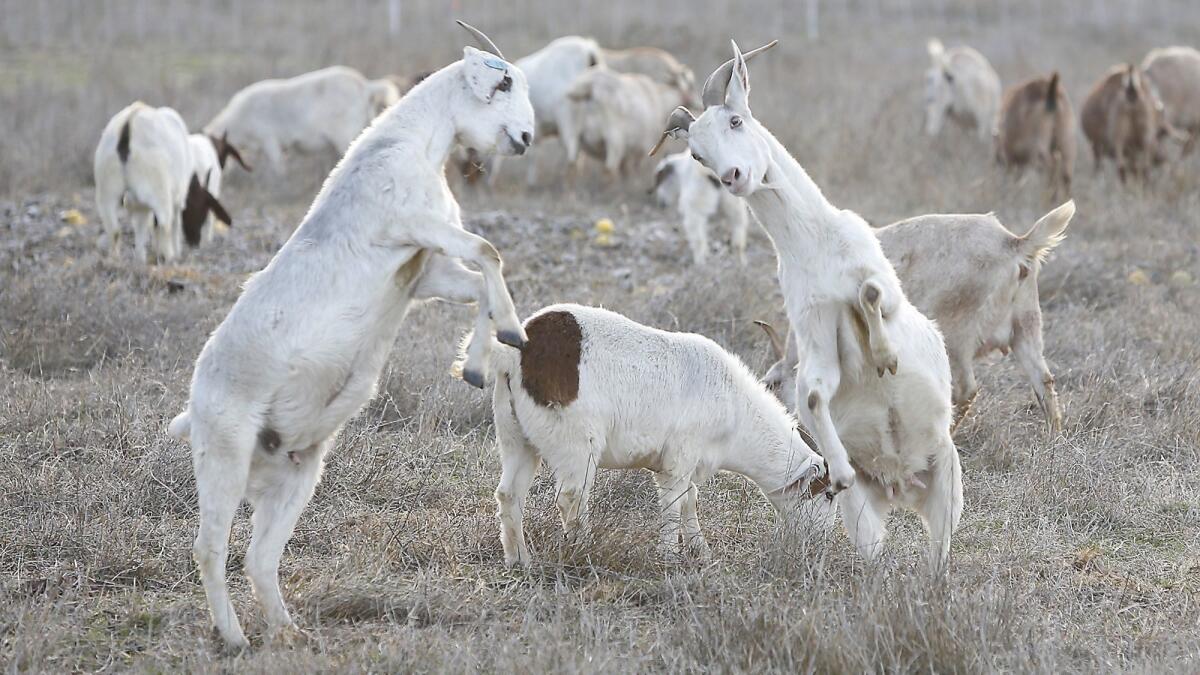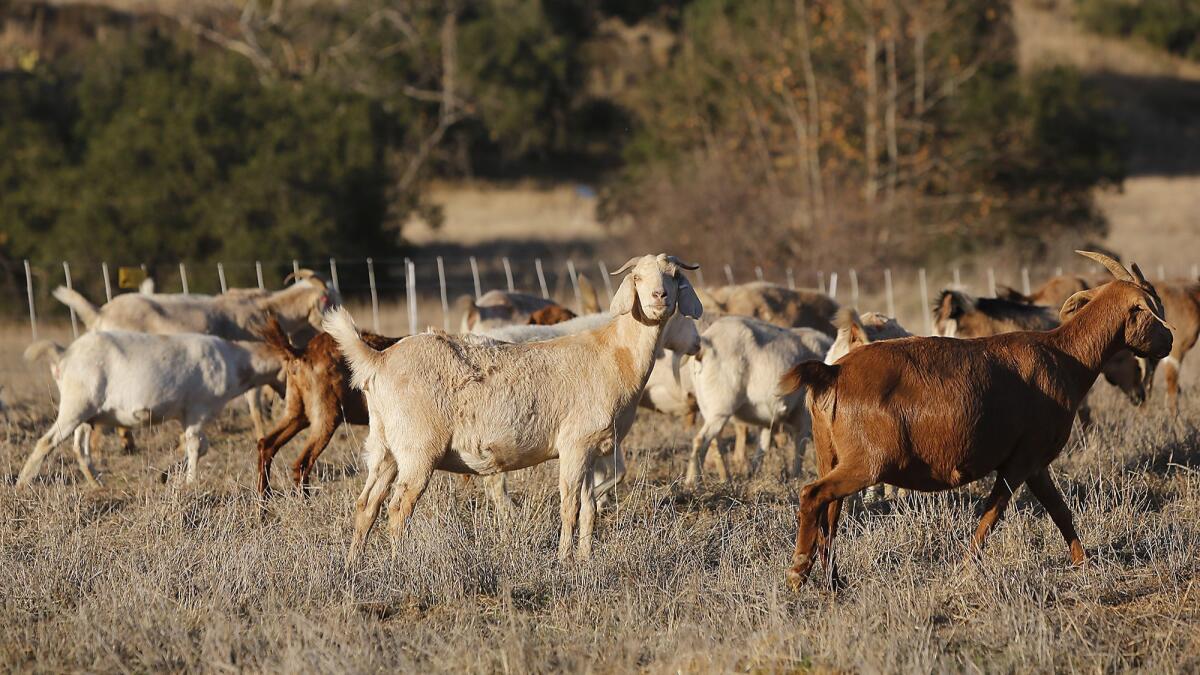Working goats help maintain Orange County open spaces and lessen fire danger

- Share via
Local land managers are employing a robust group of workers to assist with some pressing concerns about potential fire dangers and overgrowth of nonnative vegetation in open spaces.
About 100 Spanish and Spanish/Boer goats have been munching on various parts of Bee Canyon since mid-January in order to help Irvine Ranch Conservancy (IRC) in its efforts to restore native grasses like purple needlegrass.
“They catch people’s eye, they catch people’s interest — they’re cute,” said Robert Freese, project manager for restoration work at the Irvine Ranch Conservancy, overseeing the goat grazing project in Bee Canyon.
“Native grassland is one of the rarest habitats in Southern California,” Freese said.
That is because Southern California land was grazed by cattle and other livestock for decades, allowing nonnative grassland to take over, Freese said. IRC decided to use the same mechanism that destroyed the native grasses to help restore them by using goats.
“We’ve just been realizing over the past few years that managing grasslands isn’t as simple as just planting the native grass and walking away,” Freese said.
The idea was to bring goats in for a short period of time (now near its end) for controlled grazing of some areas, so that goats would eat up the nonnative grass along with its thatch — dry grass that grows quickly, doesn’t decompose easily and may prevent purple needlegrass from reestablishing itself after it’s been replanted.
The goats were kept behind solar-powered electric fencing and protected by guard dogs from local wildlife. They were moved from area to area for targeted grazing.
“Why not have goats just do something that they’re good at?” Freese said.
Goats naturally add nutrients to the soil via their stool and Freese hopes the grazing goats minimize the need for herbicide use.

It isn’t the first time IRC brought in goat workers. Five years ago, goats were used in the same canyon for a coastal sage scrub restoration project to help eat up thatch in steep and rocky areas.
“We brought in goats and it was a huge success,” Freese said.
Another area that has seen the benefits of employing goats on open land is Laguna Beach.
Ray Lardie, fire prevention officer for Laguna Beach Fire Department who oversees the city’s weed abatement program using goats, said it began in 1992 as a way to control vegetation to prevent the spread of fire.
“It gives us a protective boundary between a lot of our communities within the city,” Lardie said. “We’re controlling the amount of vegetation that are in the zones.”
There are 13 fuel modification zones maintained by goats throughout the city. The number of goats grazing at any given time range depends on need. Last summer yielded sizable vegetation due to the previous winter’s rainfall.
“At that point I had two herds of 350 each,” Lardie said.
He said the public gets a kick out of the goats and he’ll get calls asking if the goats can be milked — which they can’t.
“It’s like the city’s mobile petting zoo is what it is,” he said.
The goats are kept in pens and a contracted goatherder cares for and manages them.
“They like the green stuff — but they eat the dead stuff too — like the tumbleweed,” said Lardie, adding that goats can access remote areas that a human with a weed trimmer would find challenging. “To have people do what these goats do, to clear the amount they would do, would be financially impossible.”
Environmental Land Management in San Diego is one company that is in the goats business. Operations manager Johnny Gonzales said his company has been contracting out goats for this type of work in Southern California since 1999.
“There is an understanding among communities now that goats are effective in fire fuel mitigation and people are requesting them,” Gonzales said. “The big benefit of using goats in large-scale fire protection is we can treat more acres for less cost and incorporate all the other methods used at the same time in fire protection.”
Jessica Peralta is a contributor to Times Community News.
All the latest on Orange County from Orange County.
Get our free TimesOC newsletter.
You may occasionally receive promotional content from the Daily Pilot.



